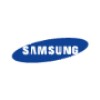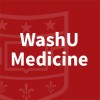
HuMax-CD4 in Non-Cutaneous T-Cell Lymphoma
T Cell LymphomaThe purpose of this study is to assess the safety and efficacy of treatment of non-cutaneous T-cell lymphoma with treatment with CD4.

Study of Bendamustine Hydrochloride and Rituximab (BR) Compared With R-CVP or R-CHOP in the First-Line...
Non-Hodgkin's LymphomaMantle Cell LymphomaThe primary objective of the study is to compare the complete response (CR) rate of bendamustine and rituximab (BR) with that of standard treatment regimens of either rituximab, cyclophosphamide, vincristine, and prednisone (R-CVP) or rituximab, cyclophosphamide, doxorubicin, vincristine, and prednisone (R-CHOP) in patients with advanced, indolent non-Hodgkin's lymphoma (NHL) or mantle cell lymphoma (MCL).

Trial for Patients With Newly Diagnosed Primary Central Nervous System (CNS) Lymphoma
Central Nervous System LymphomaThis is a multicenter open label randomized phase II trial. Enrolled Primary Central Nervous System Lymphoma (PCNSL) patients will be stratified according to the IELSG score and randomized to receive one of the follows as primary chemotherapy: Arm A: Methotrexate (MTX) + Cytarabine (Ara-C) Arm B: MTX + Ara-C + rituximab Arm C: MTX + Ara-C + rituximab + thiotepa. Chemotherapy will be administered every three weeks. The maximum number of chemotherapy induction courses will be 4. Patients in Stable Disease (SD) or better after two courses will receive two more courses of the same primary chemotherapy regimen. Stem-cells harvest will be performed in the three arms after the second course. After 4 courses response assessment will be performed. Patients who will not achieve SD or better after the 4th course, as well as those who will experience Progressive Disease (PD) at any time and those who will not achieve a sufficient stem cell harvest, will receive Whole Brain Radiation Therapy (WBRT) 36-40 Gy +/- tumor bed boost of 9 Gy. Patients who will achieve SD or better after the 4th course will be stratified according to objective response to primary chemotherapy and to primary chemotherapy regimen and randomly allocated to receive as consolidation therapy one of the follows: Arm D: WBRT 36 Gy +/- boost 9 Gy Arm E: Carmustine (BCNU) + Thiotepa + Autologous Peripheral Blood Stem Cell Transplant (APBSCT) Patients in Complete Response (CR) after WBRT or APBSCT will remain in follow-up. Patients who will not achieve a CR after WBRT will be managed according to physician's preferences. Patients who will not achieve a CR after APBSCT will be referred to WBRT.

Adriamycin, Vinblastine, DTIC and Revlimid in Elderly Hodgkin Lymphoma Patients
Hodgkin LymphomaThe purpose of this study is to determine within the scope of the trial what the maximum tolerated dose (MTD) of lenalidomide in combination with AVD should be.

Trial of Bendamustine And Rituximab for Patients With Previously Untreated Extranodal Mucosa-Associated...
MALT LYMPHOMAThe aim of the study is to assess the therapeutic activity and safety of the combination of Bendamustine and Rituximab in MALT lymphomas. Primary endpoint: Event-free-survival (EFS) (failure or death from any cause) for all patients. Secondary endpoints: Complete and partial remission rates for all patients Response duration (time to relapse or progression) for responder patients Progression-free-survival (PFS) (disease progression or death from lymphoma: for all patients Overall survival for all patients Acute and long-term toxicity

A Phase 1 Dose-escalation Trial of SGN-75 in CD70-positive Non-Hodgkin Lymphoma or Renal Cell Carcinoma...
CarcinomaRenal Cell2 moreThis is a phase 1, open-label, dose-escalation clinical trial to evaluate the safety of SGN-75 in patients with CD70-positive relapsed or refractory non-Hodgkin lymphoma or metastatic renal cell carcinoma.

Concomitant Chemo-radiotherapy Plus VIDL Chemotherapy in NK/T-cell Lymphoma
NK/T-cell Lymphoma of Nasal CavityThis study is to evaluate the efficacy of risk-adapted treatment strategy for stage I/II extranodal NK/T cell lymphoma. The risk stratification is based on the Korean NK prognostic index. Thus, the group I/II will receive concomitant chemoradiation followed by VIDL chemotherapy. The group III/IV will receive high dose-chemotherapy followed by autologous stem cell transplantation after the completion of VIDL chemotherapy.

Autologous Peripheral Blood Stem Cell Transplant Followed by Donor Bone Marrow Transplant in Treating...
B-Cell Prolymphocytic LeukemiaHypodiploidy19 moreThis phase II trial studies autologous peripheral blood stem cell transplant followed by donor bone marrow transplant in treating patients with high-risk Hodgkin lymphoma, non-Hodgkin lymphoma, multiple myeloma, or chronic lymphocytic leukemia. Autologous stem cell transplantation uses the patient's stem cells and does not cause graft versus host disease (GVHD) and has a very low risk of death, while minimizing the number of cancer cells. Peripheral blood stem cell (PBSC) transplant uses stem cells from the patient or a donor and may be able to replace immune cells that were destroyed by chemotherapy. These donated stem cells may help destroy cancer cells. Bone marrow transplant known as a nonmyeloablative transplant uses stem cells from a haploidentical family donor. Autologous peripheral blood stem cell transplant followed by donor bone marrow transplant may work better in treating patients with high-risk Hodgkin lymphoma, non-Hodgkin lymphoma, multiple myeloma, or chronic lymphocytic leukemia.

EPOCH Chemotherapy and Bortezomib for Associated T-Cell Leukemia Lymphoma
Leukemia-LymphomaAdult T-CellThe rationale of the current study is to explore the use of combination chemotherapy together with antiretroviral agents in order to determine the efficacy and toxicity of this approach, while also examining markers of virus replication and expression, and tumor cell proliferation to gain understanding of the biological basis of this malignancy and to identify predictors of response.

Lenalidomide and Ofatumumab in Treating Participants With Previously Treated Chronic Lymphocytic...
Chronic Lymphocytic LeukemiaFatigue8 moreThis phase II trial studies how well lenalidomide and ofatumumab work in treating participants with previously treated chronic lymphocytic leukemia or small lymphocytic lymphoma. Drugs used in chemotherapy, such as lenalidomide, work in different ways to stop the growth of tumor cells, either by killing the cells, by stopping them from dividing, or by stopping them from spreading. Monoclonal antibodies, such as ofatumumab, may interfere with the ability of tumor cells to grow and spread. Giving lenalidomide and ofatumumab may work better in treating participants with chronic lymphocytic leukemia or small lymphocytic lymphoma
